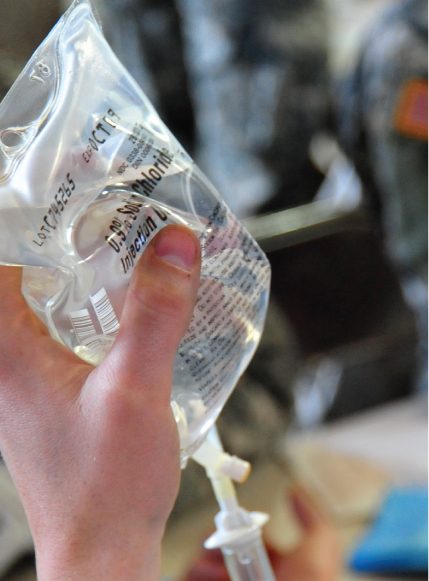Mixed percentage units, derived from the mass of solute and the volume of solution, are popular for certain biochemical and medical applications. Mass-volume percent is usually abbreviated as %m/v or %w/v when used. A mass-volume percent is a ratio of a solute’s mass to the solution’s volume expressed as a percentage. The specific units used for solute mass and solution volume may vary, depending on the solution, but are usually assumed to be grams of solvent and mL of solution if not specified:
$$\%\;m/v = \frac{g\;\text{solute}}{mL\;\text{solution}}\times 100\%$$

Calculating with % m/v
Physiological saline solution, seen above, is generally a 0.9 % m/v solution of sodium chloride (NaCl) in water. What mass of sodium chloride would be needed to make a 250 mL intravenous bag of saline solution?
Solution
We can solve this problem using the unit analysis method: $$0.9\:\%m/v\;\text{NaCl} = \frac{x\; \text{g NaCl}}{250\;\text{mL saline}} \times 100\% \\ \left(\frac{0.9\times 250}{100} \right) = x\; \text{g NaCl} \\ =0.225 \; \text{g NaCl} \\ =0.2\; \text{g NaCl} $$